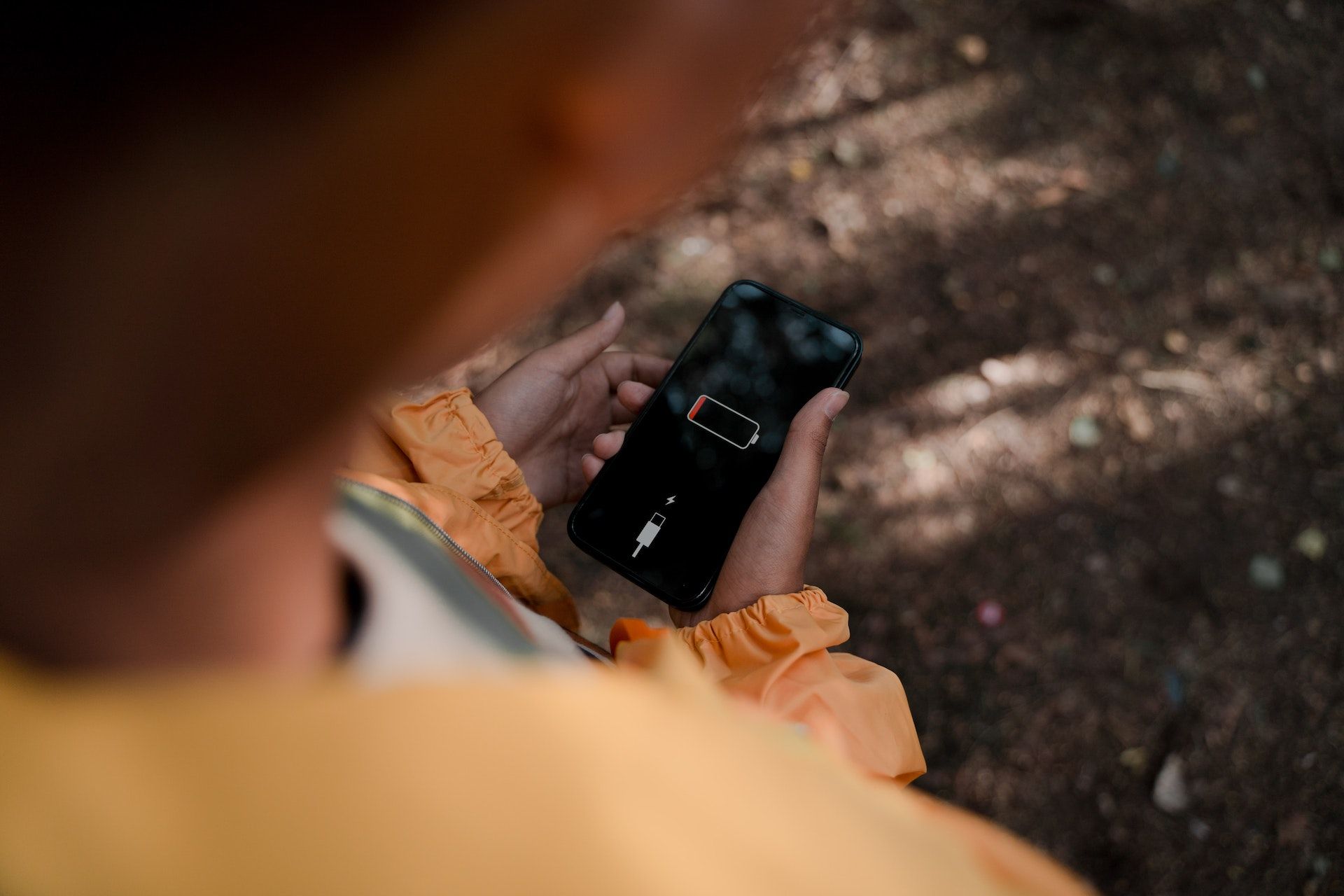eSIM とバッテリー寿命: eSIM はバッテリーをより多く消費しますか?
いいえ、違います。
旅行中、外出中に避けたいことがいくつかあります。1つは、データ不足です。2つ目は、デバイスの電池切れです。次の旅行で接続を維持するオプションを検討している場合は、おそらくeSIMのオプションに遭遇するでしょう。eSIMの世界に初めて触れる場合は、eSIMがバッテリーの電力をより多く消費するかどうかが懸念されるかもしれません。これは、旅行中に避けたいことだと思います。

eSIMとは何ですか?
eSIM は、デバイス自体に組み込まれた仮想 SIM カードです。挿入したり取り外したりする必要がある物理的な SIM カードとは異なり、eSIM はスマートフォン、タブレット、ウェアラブル デバイスに統合されています。つまり、小さな SIM カードを取り扱ったり、紛失を心配したりする必要はもうありません。
eSIMの仕組み
では、eSIM は具体的にどのように機能するのでしょうか。この小さな驚異的な技術は、デジタル技術を利用してモバイル ネットワーク情報を保存および管理します。従来の SIM カードと同様に機能し、好みのネットワーク プロバイダーに接続して音声およびデータ サービスにアクセスできるようになります。
eSIM を使用すると、ネットワーク プロバイダーを変更したり、別の国に旅行したりするときに、SIM カードを物理的に交換する必要がなくなります。代わりに、デバイスの設定から新しいプランを有効にしたり、キャリアを切り替えたりすることができます。eSIM を使用すると、複数のプロファイルを同時に保存することもできます。つまり、1 つのデバイスで複数の電話番号やデータ プランを使用できるということです。複数の SIM カードを持ち歩く手間や紛失の心配をせずに済むようなものです。
モバイルデバイスのバッテリー消費
モバイル デバイスのバッテリー寿命に関しては、いくつかの要因が関係しています。これらの要因を詳しく見て、全体的なバッテリー消費への影響を理解しましょう。
画面の明るさやデバイスのハードウェアなどの要因以外にも、バッテリー消費に影響を与えることがよく知られている要因がいくつかあります。その 1 つがアプリの使用です。アプリの中には、特に常時インターネット接続を必要とするものや、GPS などのリソースを大量に消費する機能を使用するものなど、他のアプリよりも多くの電力を消費するものが存在します。
ネットワーク信号の強さもバッテリー消費に大きく影響します。信号が弱いと、デバイスは安定した接続を維持するためにより多くの作業を行う必要があり、バッテリーの消耗が早くなります。ネットワーク信号の強いエリアにいると、バッテリーの電力を節約できます。
eSIMがバッテリー使用量に与える影響
バッテリー寿命に影響を与える可能性のある要因を考慮すると、eSIM がバッテリー使用量に与える影響に関するよくある誤解は次のとおりです。
- **誤解1:**eSIM はより多くのリソースを消費し、余分な電力を消費します。
- **誤解2:**eSIMは信号強度が弱く、接続を確立するためにより多くのバッテリーを消費します。
- **誤解3:**複数の eSIM プロファイルを使用すると、バッテリー寿命が短くなります。
しかし、これは真実ではありません。eSIMしないでください物理 SIM よりも多くのバッテリーを消費します。3 つの誤解を解明しましょう。
eSIM はより多くのリソースを消費しますか?
eSIM は、ネットワーク接続を確立する際、物理 SIM と何ら違いはありません。物理 SIM の使用と eSIM の使用を単純に比較すると、ネットワークを確立するためにリソースを集中的に使用する点に本質的に違いはありません。したがって、物理 SIM から eSIM に切り替えただけでは、バッテリー消費量が増えることはありません。
eSIM は信号強度が弱いですか?
すでに述べたように、信号強度はバッテリー寿命に影響を与える要因であるため、信号が弱い場合は、デバイスのバッテリー消費量が増える可能性があります。ただし、eSIMは**信号強度が弱くない**物理 SIM と比較して、信号強度はさまざまな要因 (接続しているネットワーク オペレーターや使用しているデバイスなど) によって左右されますが、使用している SIM カードの種類はこれらの要因の 1 つではありません。eSIM を使用しても信号が弱くなることはないため、バッテリーの消費量が増えることはありません。
複数の eSIM プロファイルを使用するとバッテリー寿命は短くなりますか?
はい、複数の eSIM プロファイルを同時に使用している場合、単一の eSIM プロファイルのみを使用している場合よりもバッテリーの消費量は確実に多くなります。ただし、これはデュアル SIM の場合のように 2 つの物理 SIM を使用する場合と変わりません。バッテリー消費量の増加は、eSIM を使用しているという事実とは関係なく、複数のネットワークに同時に接続しているという事実に関係しています。
複数の eSIM プロファイルを保存しているだけで、それらをすべて同時にアクティブにしていない場合は、バッテリー寿命に影響はありません。これらの eSIM プロファイルはデバイスにインストールされるだけですが、オンにしない限り、デバイス内で休止状態になり、ネットワークへの接続を積極的に試行することはありません。つまり、基本的にバッテリーの消耗は発生しません。
バッテリー寿命に影響を与えるeSIMの技術的側面
使用の観点から見ると、物理 SIM の代わりに eSIM を使用することでバッテリー寿命に影響はありません。実際、技術的な観点から見ると、eSIM はエネルギー効率が高くなるように設計されており、バッテリー消費を抑えることもできます。ネットワークとの通信や機能の実行には低電力技術が使用されています。これにより、バッテリーの消耗が最小限に抑えられ、電力消費を気にすることなく eSIM 技術のメリットを享受できます。
バッテリーを効率的に使用するためのヒント
eSIM は物理 SIM よりも多くのバッテリーを消費しないため、旅行中に接続を維持するために eSIM を使用するかどうかの決定を心配する必要はありません。ただし、デバイスのバッテリー消費がまだ心配な場合は、バッテリーを最適化するための実用的なヒントをいくつか紹介します。
- **画面の明るさを調整します。**バッテリー寿命を節約する最も簡単な方法の 1 つは、画面の明るさを適切なレベルに調整することです。明るさを下げると、デバイスの電力消費を大幅に削減できます。
- **使用していないアプリを閉じる:**バックグラウンドで実行されているアプリは、実際に使用していない場合でもバッテリーを消耗する可能性があります。使用していないアプリを閉じることで、不要な電力消費を防ぎ、バッテリー寿命を延ばすことができます。
- **不要な機能を無効にする:**位置情報サービスやプッシュ通知などの機能は便利ですが、バッテリーの電力をかなり消費します。電力を節約するために、必要がない場合はこれらの機能を無効にすることを検討してください。
- **省電力モードをオンにする:**最近のデバイスのほとんどには、省電力モードのオプションが付いています。これをオンにすると、デバイスはバッテリー消費を抑えるように最適化されます。たとえば、アプリはバックグラウンドで更新されなくなり、リソースをあまり消費しなくなり、画面の明るさも下がります。
- **使用していないときはWi-Fiをオフにします。**Wi-Fi が常にオンになっていると、携帯電話は接続可能な Wi-Fi 接続を積極的に探します。これにより、バッテリーの消費量が増える可能性があります。Wi-Fi に接続していない場合は、ネットワークの検索を制限するために Wi-Fi をオフにし、Wi-Fi に接続するときだけオンにしてください。